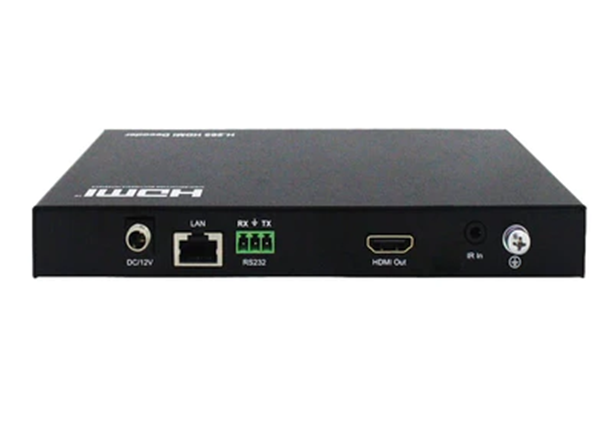The HDMI standard has become ubiquitous for high-definition video connections. But when it comes to extending these signals over long distances, traditional copper HDMI cables need to catch up. This is where fiber optic HDMI cables enter the scene, providing unmatched range and reliability using light.
In this post, we’ll explore
how fiber optic technology enables HDMI signals to travel farther distances
than copper, making them the top choice for many commercial and residential AV
applications.
Understanding Fiber Optic HDMI Cables
Fiber optic HDMI cables use
light to transmit data instead of electrons. This brings several key benefits:
Minimal Signal Loss
Fiber optic cables
lose negligible signal strength over distance. HDMI signals can reliably travel
500-1000 feet or more.
Noise Immunity
Optical data transmission
is unaffected by electromagnetic interference. HDMI signals arrive untouched by
external noise sources.
Smaller Cable Size
Fiber cables are
much thinner and more flexible than copper alternatives with similar reach—easy
routing in tight spaces.
Higher Bandwidth
Multi-strand optical
can support HDMI bandwidths exceeding 10 Gbps for the highest resolutions like
4K/60 4:4:4.
Power Transmission
Optical connections
can carry HDMI signals and electric power simultaneously on the same cable.
Light Weight
Fiber weighs a
fraction compared to copper—significant savings for installed lengths and
suspension applications.
Long Lifespan
Glass fibers are
highly durable and retain optical integrity—Outlasts copper HDMI cables.
These benefits make fiber
optic HDMI cables the top choice for extending signals over distances where
copper HDMI would falter. Applications like digital signage, conference rooms,
control rooms, luxury homes, houses of worship, and events depend on the
performance of the fiber.
How do Fiber Optic HDMI Cables Work?
A fiber optic HDMI cable contains one or more hair-thin glass fiber strands at its core. Surrounding this is cladding material, which reflects light into the fiber core, followed by protective outer jacketing.
To transmit HDMI signals, an electrical-optical converter called an HDMI to fiber converter is used on each end:
The first HDMI-to-fiber converter receives the source HDMI signal and converts it into a light-based optical signal. This optical signal gets sent through the fiber cable.
The second HDMI-to-fiber converter receives the optical signal from the fiber cable and converts it back into an electrical HDMI signal for the destination device.
No electrical signal flows
directly through the fiber cable itself. The light pulses represent digital 1s
and 0s corresponding to the transmitted data. This is what provides the cable’s
inherent noise immunity. As long as fibers aren’t physically cut, pristine
digital HDMI signals arrive at the far end.
Choosing the Right Fiber Optic HDMI Solution
When selecting fiber optic
HDMI cables and converters, key factors to consider include:
HDMI Version Support
Optical solutions
that support the latest HDMI 2.1 ensure maximum compatibility for high-res
signals like 8K/60hz, 4K/120hz, and Dynamic HDR.
HDR Support
Fiber products that
support HDR, HLG, and other HDR signals ensure colors translate accurately
across the long distance.
EDID Management
Advanced fiber
converters preserve EDID communication for plug-and-play configuration between
connected source and display.
Audio Support
Look for optical
HDMI products with multi-channel digital audio like Dolby Atmos/DTS:X
object-based surround sound.
Power Options
Optical HDMI
products with simultaneous power lessen the need for extra power cables. Choose
PoH (Power over HDBaseT) or PoC (Power Over Coax).
Cable Protection
Optical cables with jacketing to protect
against flexing, EMI, abrasions, and other hazards last longer in installed
applications.
Integrated Control
Built-in RS-232, IR,
and Ethernet in the fiber converters enable AV control without extra control
system wiring.
Enclosure Style
Compact enclosures,
surface boxes, and rack-mountable form factors provide flexible installation
options.
Companies like Brightlink
AV offer complete fiber optic HDMI connectivity solutions engineered for
ultimate performance, longevity, and seamless integration.
Critical Applications of Fiber Optic HDMI Cables
With the ability to extend
HDMI flawlessly over extremely long reaches, fiber optic HDMI cables open up
possibilities not feasible with copper cables. Some key applications include:
Digital Signage Networks
Interconnect distributed banks of media
players and displays over a campus or metropolitan region.
Command & Control Rooms
Monitor critical surveillance, diagnostics,
and process data across multiscreen video walls.
Conference & Events
Share HDMI content
between lecterns, projectors, audio systems, and screens across expansive
venues.
Houses of Worship
Distribute HDMI to
lobbies, overflow rooms, and display clusters across a worship center.
Sports Stadiums
Link HDMI between
cameras, production rooms, giant scoreboard displays, and more throughout the
facility.
Museums & Galleries
Extend interactive
exhibit video to kiosks throughout an attraction. Immersive art installations.
Luxury Residences
Watch the same Ultra
HD content simultaneously on displays in multiple rooms without latency.
Yachts & Aircraft
Share HD video and
audio to every cabin and salon display from centralized media systems.
Fiber optic HDMI empowers
these complex AV systems and many more applications where copper HDMI cables
have distance limitations. With the right products, integrators can now design
advanced systems not otherwise possible.
The Bottom Line
FIBER OPTIC HDMI CABLES ARE
THE SUPERIOR CONNECTIVITY SOLUTION when HDMI signals need to reach destinations
beyond 30 feet reliably. Leveraging the speed and clarity of light, optical
HDMI ensures flawless video and audio transport regardless of interference or
distance across installations of every scale.
As home theaters get bigger, commercial displays expand in quantity and resolution, and architectural AV gets more immersive, fiber optic HDMI cables will remain the backbone enabling next-generation AV experiences. Even the most ambitious applications are within reach with the correct fiber product selection. Brightlink AV offers complete fiber optic HDMI, Extender/Transmitter, and other A/V solutions.




.jpg)

.jpg)
No comments:
Post a Comment